Interventions to reduce tobacco use in people experiencing homelessness
- PMID: 33284989
- PMCID: PMC8130995
- DOI: 10.1002/14651858.CD013413.pub2
Interventions to reduce tobacco use in people experiencing homelessness
Abstract
Background: Populations experiencing homelessness have high rates of tobacco use and experience substantial barriers to cessation. Tobacco-caused conditions are among the leading causes of morbidity and mortality among people experiencing homelessness, highlighting an urgent need for interventions to reduce the burden of tobacco use in this population.
Objectives: To assess whether interventions designed to improve access to tobacco cessation interventions for adults experiencing homelessness lead to increased numbers engaging in or receiving treatment, and whether interventions designed to help adults experiencing homelessness to quit tobacco lead to increased tobacco abstinence. To also assess whether tobacco cessation interventions for adults experiencing homelessness affect substance use and mental health.
Search methods: We searched the Cochrane Tobacco Addiction Group Specialized Register, MEDLINE, Embase and PsycINFO for studies using the terms: un-housed*, homeless*, housing instability, smoking cessation, tobacco use disorder, smokeless tobacco. We also searched trial registries to identify unpublished studies. Date of the most recent search: 06 January 2020.
Selection criteria: We included randomized controlled trials that recruited people experiencing homelessness who used tobacco, and investigated interventions focused on the following: 1) improving access to relevant support services; 2) increasing motivation to quit tobacco use; 3) helping people to achieve abstinence, including but not limited to behavioral support, tobacco cessation pharmacotherapies, contingency management, and text- or app-based interventions; or 4) encouraging transitions to long-term nicotine use that did not involve tobacco. Eligible comparators included no intervention, usual care (as defined by the studies), or another form of active intervention.
Data collection and analysis: We followed standard Cochrane methods. Tobacco cessation was measured at the longest time point for each study, on an intention-to-treat basis, using the most rigorous definition available. We calculated risk ratios (RRs) and 95% confidence intervals (CIs) for smoking cessation for each study where possible. We grouped eligible studies according to the type of comparison (contingent reinforcement in addition to usual smoking cessation care; more versus less intensive smoking cessation interventions; and multi-issue support versus smoking cessation support only), and carried out meta-analyses where appropriate, using a Mantel-Haenszel random-effects model. We also extracted data on quit attempts, effects on mental and substance-use severity, and meta-analyzed these outcomes where sufficient data were available.
Main results: We identified 10 studies involving 1634 participants who smoked combustible tobacco at enrolment. One of the studies was ongoing. Most of the trials included participants who were recruited from community-based sites such as shelters, and three included participants who were recruited from clinics. We judged three studies to be at high risk of bias in one or more domains. We identified low-certainty evidence, limited by imprecision, that contingent reinforcement (rewards for successful smoking cessation) plus usual smoking cessation care was not more effective than usual care alone in promoting abstinence (RR 0.67, 95% CI 0.16 to 2.77; 1 trial, 70 participants). We identified very low-certainty evidence, limited by risk of bias and imprecision, that more intensive behavioral smoking cessation support was more effective than brief intervention in promoting abstinence at six-month follow-up (RR 1.64, 95% CI 1.01 to 2.69; 3 trials, 657 participants; I2 = 0%). There was low-certainty evidence, limited by bias and imprecision, that multi-issue support (cessation support that also encompassed help to deal with other challenges or addictions) was not superior to targeted smoking cessation support in promoting abstinence (RR 0.95, 95% CI 0.35 to 2.61; 2 trials, 146 participants; I2 = 25%). More data on these types of interventions are likely to change our interpretation of these data. Single studies that examined the effects of text-messaging support, e-cigarettes, or cognitive behavioral therapy for smoking cessation provided inconclusive results. Data on secondary outcomes, including mental health and substance use severity, were too sparse to draw any meaningful conclusions on whether there were clinically-relevant differences. We did not identify any studies that explicitly assessed interventions to increase access to tobacco cessation care; we were therefore unable to assess our secondary outcome 'number of participants receiving treatment'.
Authors' conclusions: There is insufficient evidence to assess the effects of any tobacco cessation interventions specifically in people experiencing homelessness. Although there was some evidence to suggest a modest benefit of more intensive behavioral smoking cessation interventions when compared to less intensive interventions, our certainty in this evidence was very low, meaning that further research could either strengthen or weaken this effect. There is insufficient evidence to assess whether the provision of tobacco cessation support and its effects on quit attempts has any effect on the mental health or other substance-use outcomes of people experiencing homelessness. Although there is no reason to believe that standard tobacco cessation treatments work any differently in people experiencing homelessness than in the general population, these findings highlight a need for high-quality studies that address additional ways to engage and support people experiencing homelessness, in the context of the daily challenges they face. These studies should have adequate power and put effort into retaining participants for long-term follow-up of at least six months. Studies should also explore interventions that increase access to cessation services, and address the social and environmental influences of tobacco use among people experiencing homelessness. Finally, studies should explore the impact of tobacco cessation on mental health and substance-use outcomes.
Copyright © 2020 The Cochrane Collaboration. Published by John Wiley & Sons, Ltd.
Conflict of interest statement
Maya Vijayaraghavan has no conflicts of interest to report. MV has one pending grant application on the topic of smoke‐free policies in permanent supportive housing for formerly homeless populations, and was recently awarded a grant by the Tobacco Related Disease Research Program to study extended contingent reinforcement interventions for long‐term abstinence for people experiencing homelessness.
Holly Elser has no conflicts of interest.
Kate Frazer has no conflicts of interest. KF is the co‐investigator on a grant from the Irish Cancer Society awarded January 2020 for 18 months:
Nicola Lindson has no conflicts of interest.
Dorie Apollinio has no conflicts of interest.
Figures
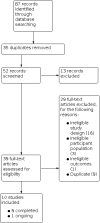
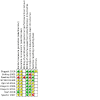
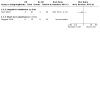
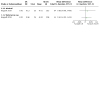

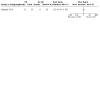
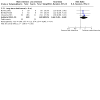


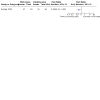
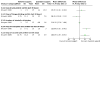
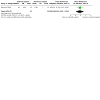





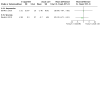






Update of
References
References to studies included in this review
Baggett 2018 {published data only}
-
- Baggett TP, Yaqubi A, Berkowitz SA, Kalkhoran SM, McGlave C, Chang Y, et al. Subsistence difficulties are associated with more barriers to quitting and worse abstinence outcomes among homeless smokers: evidence from two studies in Boston, Massachusetts. BMC Public Health 2018;18(1):463. - PMC - PubMed
-
- McGlave CC, Kruse G, Yaqubi A, Chang Y, Rigotti N, Baggett T. Smokefree TXT for homeless smokers: a pilot RCT with a mixed methods analysis. In: 7th Annual Meeting of the MGH Scientific Advisory Committee; 2018 03 28; Massachusetts General Hospital, USA. 2018.
-
- NCT02565381. A pilot randomized controlled trial of financial incentives, text messaging, and usual care for homeless smokers (QUIT). clinicaltrials.gov/ct2/show/NCT02565381 (first received 01 October 2015).
Burling 2001 {published data only}
Dawkins 2020 {published data only}
-
- Dawkins L, Bauld L, Ford A, Robson D, Hajek P, Parrott S, et al. A cluster feasibility trial to explore the uptake and use of e-cigarettes versus usual care offered to smokers attending homeless centres in Great Britain. PLOS One 2020;15:e0240968. [DOI: 10.1371/journal.pone.0240968] - DOI - PMC - PubMed
-
- Dawkins L. Exploring the uptake and use of e-cigarettes offered to adults accessing homeless centres in the UK: quantitative results. In: UK Electronic Cigarette Research Forum; 2020 01 17; London: UK. London: Cancer Research UK, 2020.
-
- ISRCTN14140672. Exploring the use and uptake of e-cigarettes for homeless smokers. www.isrctn.com/ISRCTN14140672 (first received 25 September 2019).
NCT02245308 {published data only}
-
- NCT02245308. Abstinence reinforcement therapy for homeless veteran smokers. clinicaltrials.gov/ct2/show/NCT02245308 (first received 19 September 2014).
Ojo‐Fati 2015 {published data only}
-
- NCT01932996. Enhancing smoking cessation in the homeless population. clinicaltrials.gov/ct2/show/NCT01932996 (first received 30 August 2013).
Okuyemi 2006 {published data only}
-
- Okuyemi KS, Thomas L, Hall S, Nollen NL, Richter KP, Jeffries SK, et al. Smoking cessation in homeless populations: a pilot clinical trial. Nicotine & Tobacco Research October 2006;8(5):689-99. - PubMed
Okuyemi 2013 {published data only}
-
- NCT00786149. Improving varenicline adherence and outcomes in homeless smokers. clinicalTrials.gov/show/NCT00786149 (first received 6 November 2008).
Rash 2018 {published data only}
-
- NCT01736982. Contingency management for smoking cessation in the homeless. clinicaltrials.gov/ct2/show/NCT01736982 (first received 29 November 2012).
Spector 2007 {published data only}
-
- Spector A, Alpert H, Karam-Hage M. Smoking cessation delivered by medical students is helpful to homeless population. Academic Psychiatry 2007;31(5):402-5. - PubMed
References to studies excluded from this review
Beckham 2018 {published data only}
-
- Beckham JC, Kirby AC, Tise N, Carpenter VL, Dedert EA, McNiel JM, et al. A learning collaborative model for implementation of smoking cessation among homeless veterans. Journal of Smoking Cessation 2018;13(3):129-36.
Bonevski 2011 {published data only}
Bonevski 2012 {published data only}
-
- Bonevski B, Baker A, Twyman L, Paul C, Bryant J. Addressing smoking and other health risk behaviours using a novel telephone-delivered intervention for homeless people: a proof-of-concept study. Drug and Alcohol Review 2012;31(5):709-13. - PubMed
Businelle 2014 {published data only}
-
- Businelle MS, Kendzor DE, Kesh A, Cuate EL, Poonawalla IB, Reitzel LR, et al. Small financial incentives increase smoking cessation in homeless smokers: a pilot study. Addictive Behaviors 2014;39(3):717-20. - PubMed
Businelle 2015 {published data only}
-
- Businelle MS, Poonawalla IB, Kendzor DE, Rios DM, Cuate EL, Savoy EJ, et al. Smoking policy change at a homeless shelter: attitudes and effects. Addictive Behaviors 2015;40:51-6. - PubMed
Carpenter 2015 {published data only}
Chen 2015 {published data only}
-
- Chen TC, Myers MG. A comprehensive approach to tobacco cessation for the homeless. Journal of Clinical Psychiatry 2015;76(7):e908-10. - PubMed
Collins 2019 {published data only}
-
- Collins SE, Nelson LA, Stanton J, Mayberry N, Ubay T, Taylor EM, et al. Harm reduction treatment for smoking (HaRT-S): findings from a single-arm pilot study with smokers experiencing chronic homelessness. Substance Abuse 2019;40(2):229-39. - PubMed
Hamner 2015 {published data only}
-
- Hamner MB. Smoking cessation in homeless veterans. Journal of Clinical Psychiatry 2015;76(7):e911-2. - PubMed
Hickman 2015 {published data only}
Nyamathi 2012 {published data only}
Power 2015 {published data only}
-
- Power J, Mallat C, Bonevski B, Nielssen O. An audit of assessment and outcome of intervention at a quit smoking clinic in a homeless hostel. Australasian Psychiatry 2015;23(5):528-30. - PubMed
Santa Ana 2016 {published data only}
-
- Santa Ana EJ, LaRowe S, Hartwell KJ, Lamb K. Impact of group motivational interviewing on enhancing treatment engagement for homeless veterans with nicotine dependence and other substance use disorders. American Journal on Addictions 2016;25(7):533-41. [DOI: https://doi.org/10.1111/ajad.12426] - PMC - PubMed
Segan 2015 {published data only}
Shadel 2015 {published data only}
-
- Shadel WG, Tucker JS, Golinelli D. Readjusting our priorities: helping homeless youth quit smoking. American Journal of Preventive Medicine 2015;49(6):970-3. - PubMed
Shelley 2010 {published data only}
Sherman 2016 {published data only}
-
- NCT01363245. Effectiveness of smoking-cessation interventions for urban hospital patients. clinicaltrials.gov/ct2/show/NCT01363245 (first received 1 June 2011).
-
- Rogers ES, Friedes R, Jakes A, Grossman E, Link A, Sherman SE. Long-term abstinence and predictors of tobacco treatment uptake among hospitalized smokers with serious mental illness enrolled in a smoking cessation trial. Journal of Behavioral Medicine 2017;40(5):750-9. [DOI: 10.1007/s10865-017-9844-0] - DOI - PubMed
Tucker 2015 {published data only}
-
- Tucker JS, Shadel WG, Golinelli D, Ewing B, Mullins L. Motivation to quit and interest in cessation treatment among homeless youth smokers. Nicotine & Tobacco Research 2015;17(8):990-5. - PubMed
Vijayaraghavan 2016a {published data only}
-
- Vijayaraghavan M, Guydish J, Pierce JP. Building tobacco cessation capacity in homeless shelters: a pilot study. Journal of Community Health 2016;41(5):998-1005. - PubMed
References to ongoing studies
Tucker 2020 {published and unpublished data}
-
- NCT03874585. Text messaging-based smoking cessation program for homeless youth. clinicaltrials.gov/ct2/show/NCT03874585 (first received 14 March 2019).
-
- Tucker JS, Pedersen ER, Linnemayr S, Shadel WG, DeYoreo M, Zutshi R. A text message intervention for quitting cigarette smoking among young adults experiencing homelessness: study protocol for a pilot randomized controlled trial. Addiction Science & Clinical Practice 2020;15(1):1-13. [DOI: ] - PMC - PubMed
Additional references
ANHD 2018
-
- Association for Neighborhood and Housing Development. Growing Overcrowding, Growing Risk of Homelessness Shown in New Affordable Housing Neighborhood Risk Analysis. anhd.org/press-release/growing-overcrowding-growing-risk-homelessness-sh... (accessed 31 July 2019).
Apollonio 2005
Apollonio 2016
Arnsten 2004
-
- Arnsten JH, Reid K, Bierer M, Rigotti N. Smoking behavior and interest in quitting among homeless adults. Addictive Behaviors 2004;29(6):1155-61. - PubMed
Aveyard 2012
Baggett 2013a
-
- Baggett TP, Tobey ML, Rigotti NA. Tobacco use among homeless people - addressing the neglected addiction. New England Journal of Medicine 2013;369(3):201-4. [PMID: PMID: 23863048] - PubMed
Baggett 2013b
Baggett 2013c
Baggett 2015
-
- Baggett TP, Chang Y, Singer DE, Porneala BC, Gaeta JM, O'Connell JJ, et al. Tobacco-, alcohol-, and drug-attributable deaths and their contribution to mortality disparities in a cohort of homeless adults in Boston. American Journal of Public Health 2015;105(6):1189-97. [PMID: PMID: 25521869] - PMC - PubMed
Baggett 2016a
Baggett 2016b
Baggett 2017
Businelle 2014a
Cahill 2013
Carpenter 2011
Catley 2016
Chen 2016
-
- Chen JS, Nguyen AH, Malesker MA, Morrow LE. High-risk smoking behaviors and barriers to smoking cessation among homeless individuals. Respiratory Care 2016;61(5):640-5. [PMID: PMID: 26860400] - PubMed
Collins 2018
-
- Collins SE, Orfaly VE, Wu T, Chang S, Hardy R, Nash A, et al. Content analysis of homeless smokers ' perspectives on established and alternative smoking interventions. International Journal of Drug Policy 2018;51:10-17. - PubMed
Connor 2002
Council to Homeless Persons 2018
-
- Council to Homeless Persons. No room to breathe; why severe overcrowding is a form of homelessness. 2018. chp.org.au/no-room-to-breathe-why-severe-overcrowding-is-a-form-of-homel... (accessed 31 July 2019).
Culhane 2013
-
- Culhane DP, Metraux S, Byrne T, Stino M, Bainbridge J. The age structure of contemporary homelessness: evidence and implications for public policy. Analysis of Social Issues and Public Policy 2013;13(1):228-44.
Dawkins 2019
-
- Dawkins L, Ford A, Bauld L, Balaban S, Tyler A, Cox S. A cross sectional survey of smoking characteristics and quitting behaviour from a sample of homeless adults in Great Britain. Addictive Behaviors 2019;95:35-40. - PubMed
Fazel 2008
Fazel 2014
Garner 2013
Goldade 2011
Hartmann‐Boyce 2019
Hartmann‐Boyce 2020
Higgins 2011
-
- Higgins JP, Green S, editor(s). Cochrane Handbook for Systematic Reviews of Interventions Version 5.1.0 (updated March 2011). The Cochrane Collaboration, 2011. Available from handbook.cochrane.org.
Higgins 2020
-
- Higgins JP, Thomas J, Chandler J, Cumpston M, Li T, Page MJ, et al (editors). Cochrane Handbook for Systematic Reviews of Interventions Version 6.1 (updated September 2020). The Cochrane Collaboration, 2020. www.training.cochrane.org/handbook.
Hwang 2009
Jamal 2015
-
- Jamal A, Homa DM, O'Conner E, Babb SD, Caraballo RS, Singh T, et al. Current cigarette smoking among adults - United States, 2005-2014. Morbidity and Mortality Weekly Report 2015;64:1233-40. - PubMed
Lancaster 2017
McInnes 2013
Neisler 2018
Nguyen 2015
-
- Nguyen MA, Reitzel LR, Kendzor DE, Businelle MS. Perceived cessation treatment effectiveness, medication preferences, and barriers to quitting among light and moderate/heavy homeless smokers. Drug & Alcohol Dependence 2015;153:341-5. [PMID: PMID: 26072221] - PubMed
Notley 2019
Okuyemi 2006a
-
- Okuyemi KS, Caldwell AR, Thomas JL, Born W, Richter KP, Nollen N, et al. Homelessness and smoking cessation: insights from focus groups. Nicotine & Tobacco Research 2006;8(2):287-96. - PubMed
Pratt 2019
Reitzel 2011
Reitzel 2014
Scheibein 2020
-
- Scheibein F, McGirr K, Morrison A, Roche W, Wells J. An exploratory non-randomized study of 3-month electronic nicotine delivery system (ENDS) intervention with people accessing a homeless supported temporary accomodation services (STA) in Ireland. Harm Reduction Journal 2020;17(73):1-10. - PMC - PubMed
Schroeder 2009
-
- Schroeder SA, Morris CD. Confronting a neglected epidemic: tobacco cessation for persons with mental illnesses and substance abuse problems. Annual Review of Public Health 2009;31:297-314. - PubMed
Shadel 2014
-
- Shadel WG, Tucker JS, Mullins L, Staplefoot L. Providing smoking cessation programs to homeless youth: the perspective of service providers. Journal of Substance Abuse Treatment 2014;47(4):251-7. - PubMed
Soar 2020
-
- Soar K, Dawking L, Robson D, Cox S. Smoking amongst adults experiencing homelessness: a systematic review of prevalence rates, interventions, barriers and facilitators to quitting and staying quit. Journal of Smoking Cessation 2020;15:94-108.
Stead 2016
Vijayaraghavan 2014
Vijayaraghavan 2015
-
- Vijayaraghavan M, Pierce JP. Interest in smoking cessation related to a smoke-free policy among homeless adults. Journal of Community Health 2015;40(4):686-91. [PMID: PMID: 25559109 ] - PubMed
Vijayaraghavan 2016b
-
- Vijayaraghavan M, Hurst S, Pierce P. Implementing tobacco control programs in homeless shelters: a mixed-methods study. Health Promotion Practice 2016;17(4):501-11. [PMID: PMID: 26678988] - PubMed
Vijayaraghavan 2016c
Vijayaraghavan 2017
-
- Vijayaraghavan M, Hurst S, Pierce JP. A qualitative examination of smoke-free policies and electronic cigarettes among sheltered homeless adults. American Journal of Health Promotion 2017;31(3):243-50. [PMID: PMID: 26559719] - PubMed
Vijayaraghavan 2018
Wilson 2017
-
- Wilson A, Guillaumier A, George J, Denham A, Bonevski B. A systematic narrative review of the effectiveness of behavioural smoking cessation interventions in selected disadvantaged groups (2010-2017). Expert Review of Respiratory Medicine 2017;11(8):617-30. [DOI: ] - PubMed

